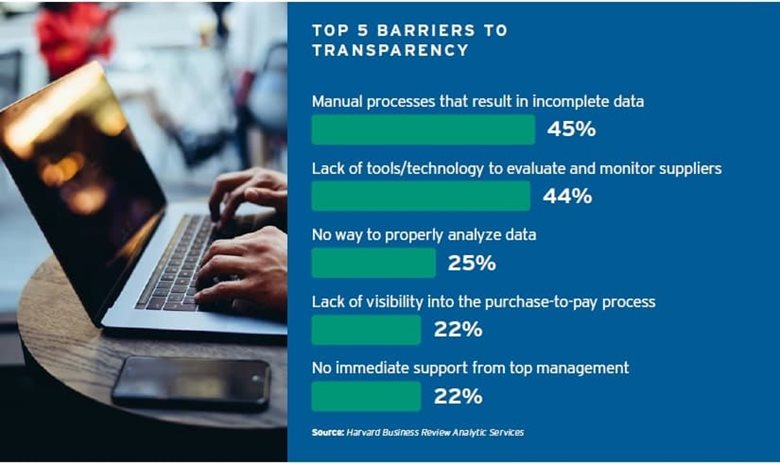- Blog
- Ensure Consumer Goods Business Continuity with Digitization
Ensure Consumer Goods Business Continuity with Digitization
The current climate of business operations is rocky. And though many organisations are finding creative ways to keep business flowing, there’s one thing they might not be maximising—digitisation. Read more to learn how digitising your P2P operations can ensure business continuity.
What even is “business as usual” anymore?
“Business as usual.” It’s hard to put into words what this means anymore. The current state of business operations seems disjointed and strange. For many, it’s the first time they’ve been required to work from home. For others, it means quickly figuring out how to access company documents, supplier records, systems, and invoice documents remotely. And for most, it means searching for some way to keep some semblance of “business as usual” in unusual times.
The issue is many of these organisations facing pressures to keep business operations and payments flowing as usual in these unusual circumstances aren’t fully leveraging cloud-based procure-to-pay (P2P) solutions.
The problem with lacking digitisation
Think of how your business has changed just in the last few weeks. For instance, how much of your workforce is now remote? Probably a decent amount if you’re trying to adapt and stay afloat. But you can’t expect your workforce to continue with their operations successfully if they don’t have access to the tools they need to do so. It’s sometimes not just difficult for employees to access the software they need from outside the office but also accessing physical documents can be challenging.
Consider all the paper documents left sitting on employees’ desks, waiting to be processed but can’t be because that employee isn’t allowed back into their building – what if one of those is an important invoice, new supplier set up or a credit note? If these files were digitised, then there would be no bottleneck present. Orders and invoices could be processed as usual; suppliers could be set up and paid on time; purchases could be made compliantly.
Digitisation trends in the CPG industry
Historically, growth in consumer goods was driven by economies of scale. Every day this becomes less and less true. According to a Deloitte study, due to the uncertain economy in 2020, CPG companies “should focus on committing themselves to investing in digital technologies with built-in analytic capabilities that help them better understand their consumers and the operational problems they are trying to solve. Collecting data is just the first step. Data is only useful to the extent that it can be harnessed to generate insights.”
Growth for the CPG market is shaped by the use of online channels, curating offers, personalising products, using new digital business models, adding experiences, and also catering to increasingly niche consumer interests. These growth vehicles can only be delivered through robust digital and analytical capabilities and transparency into your operations.

In an Accenture survey, it was revealed that 84% of CPG CFOs are taking responsibility for data governance across their entire organisation. More than any other industry surveyed. And since the consumer goods industry tends to experience challenges with decentralised operations and high purchase order (PO) volume spend, it can be difficult to determine a single source for data, creating a major barrier to implementing automation and the various digitised technologies needed to ensure business continuity and focus on value-adding tasks.
Using digitisation for business continuity
As stated in an article from CFOdive.com, digitised, “cloud-based platforms are ideally suited during the novel coronavirus outbreak to help CFOs and their finance and accounting teams get reports and other must-do tasks done while working remotely, but many are behind the curve on this.”
Though a global pandemic might not seem like the most ideal time to digitise your operations, disruptive times like these provide a beneficial opportunity to consider where your business currently stands and what sort of strategic plan you want to pursue to enable sustained operations and ensure future success. Consider the following questions:
-
Could you benefit from greater business process and application agility?
-
Do you want further transparency across your processes as well as increased cost savings and improved efficiencies?
-
Do you have the visibility needed to tackle the increase in supply chain risk and disruption?
-
Do you have the tools you need to pivot towards increased support for digital commerce?

For starters, there’s a lot your business can gain from digitised P2P processes. For instance, digitisation enables procurement and AP remote working seamlessly. With easy access to users’ relevant programs, they can continue with business as usual from wherever they’re located so long as they have an internet connection and a device.
From the AP side, without having to depend on outdated business functions and paper invoices, operations keep flowing as usual – the only change is that it’s digitised. You can also keep all your information organised and safe for any potential audits in a secured but easy-to-access digitised repository that includes all relevant invoice and transaction information.
(Could AP Automation be the key to keeping your cash flowing? Read more in our blog.)
From the Procurement side, digitised processes offer streamlined support for multiple workstreams including indirect goods, direct goods, and services procurement. Digitised procurement offers a more consumer-oriented user experience (UX) that not only eases training and onboarding but also packages capabilities and admin rights based on unique roles.
And for all departments, the appeal of incorporating emerging technologies such as artificial intelligence (AI), machine learning (ML), natural language processing (NLP), and a conversational UX into their jobs only further support the decision to adopt digitised operations.
The Accenture survey report also revealed that “82 percent of CPG workers expect digital to fundamentally change the work they do within the next three years. Moreover, 80 percent are positive about the changes this will bring, and 90 percent are ready to engage in the process.”
Other benefits of digitisation include the following:
-
Digitisation enables greater spend visibility and analysis. Built-in reporting features offer the flexibility to both customise and automate reporting. With this sort of insight and oversight, your Procurement and Finance teams have better visibility into where money is going, where savings opportunities are hiding, and ways to reduce overall costs.
-
Digitisation enhances supplier management and relationships. Many global organisations have a long list of suppliers to manage, but having these suppliers set up in your digitised procurement solution makes it easier to store catalogs, easily create and approve purchase orders, and enable your suppliers to receive and fulfill orders quicker.
-
Digitisation supports environmental sustainability. Consumers are becoming less concerned with getting items for the cheapest price possible and more concerned with the environmental and ethical impact of their purchase. Digitisation offers holistic visibility into your supply chain while also eliminating paper from business processes for a smaller carbon footprint.
Get started with your digitisation transformation
Amid what seems like a storm of business uncertainties, one thing is for sure—there’s no time better than the present. The same goes for digitised transformation. You might feel behind the game, especially after having to switch possibly your entire workforce and operations remote in the blink of an eye. But that doesn’t mean you’re out of luck.
You can and should consider steps to fully move your business into the digitised world. Here’s how you can get started:
1. Map out your needs: Work together with your business leaders, key stakeholders, and users to lay everyone’s expectations, opinions, and needs on the table.
2. Consider your gaps and solutions: Take inventory of what solutions can coexist together, what gaps you specifically need to fill in your operations, and decide what solutions are the most important.
3. Remain a part of the process: After choosing a vendor and implementing a solution, don’t become stagnant. Constantly push for ways to optimise, improve, and strategise with your solution vendor.
(Read more about these steps in our blog here.)
Digitised AP - Learn more
Automation and digitisation are key to achieving and ensuring success regardless of what disruptions occur. Learn more about how and why CPG businesses can enhance their operations using automated solutions.
Related
-
By Basware RepresentativeThe route to logistics software harmony for finance, AP and procurement
-
By Katarzyna FonteynA Reflection on the State of Procurement
-
By Katarzyna FonteynHow to create procurement visibility from day 1
-
By Basware RepresentativeDon’t Delay Digital Procurement & Finance Investments
-
By Ann StrömbergNordic Leaders Circle focused on procurement development
-
By Katie ColbourneProcure-to-Pay Trends Predictions and Advancements for 2022 and Beyond
-
By Basware RepresentativeBasware to Help Expand e-Invoicing with the Business Payment Coalition
-
By Ann StrömbergProcurement Collaboration, Resilience, Technology, and Sustainability

